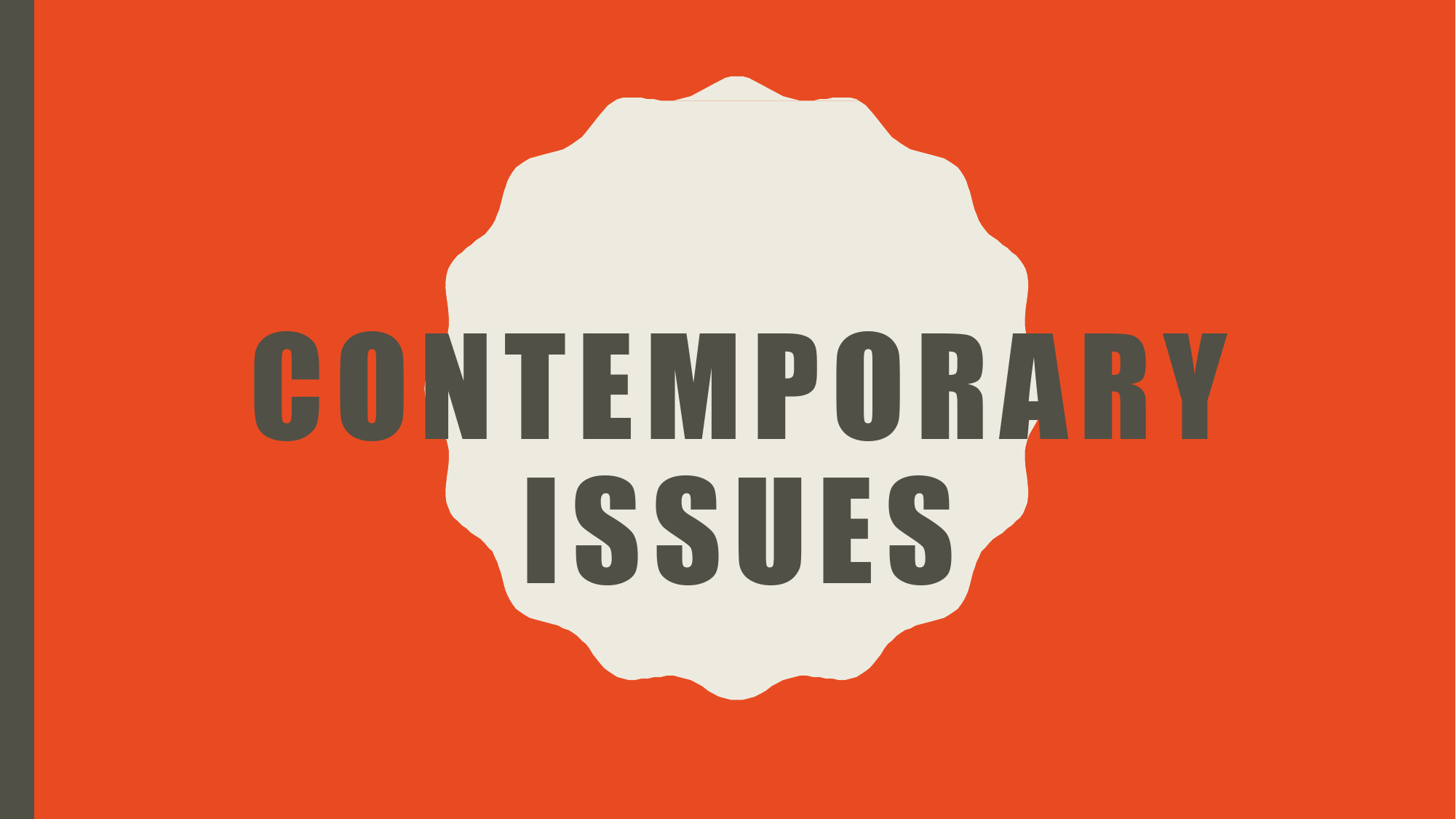
Modern Issues Discussion & Debates
Each week, we will explore a modern political or social issue through discussion and structured debate. This activity will help you connect current events to the principles of government, the U.S. Constitution, and historical precedent.
How It Works
Topic Presentation
At the start of the week, I will present one or more topics for discussion.
Topics will connect to current U.S. or international issues (examples: voting rights, foreign policy crises, Supreme Court cases, budget debates).
Preparation
Throughout the week, you will:
Read assigned and self-selected sources.
Develop either an affirmative case (supporting the topic/position) or a negative case (opposing the topic/position).
Prepare notes and evidence to defend your case in debate or discussion.
Discussion/Debate Day
At the end of the week (depending on the class schedule), we will hold our debate/discussion.
You will present your prepared case, respond to questions, and engage respectfully with opposing viewpoints.
Required Perspectives for Your Case
When preparing your arguments, you must address the issue through all four of the following lenses:
Historical Precedent
What examples from U.S. or world history provide lessons for how we should approach this issue?
Are there past events, policies, or debates that shaped similar issues?
Constitutional / Legal Framework
What does the U.S. Constitution, federal law, or Supreme Court precedent say about this issue?
If it is a global issue, what does international law or treaties say?
Broader Arguments (5–10 points)
Identify at least five to ten distinct arguments that should be considered.
These may include ethical, economic, political, cultural, or security considerations.
Authoritative, Nonpartisan Sources
Use evidence from credible, fact-based sources (e.g., Congressional Research Service, Pew Research Center, C-SPAN, Supreme Court opinions, academic journals, major newspapers with high editorial standards).
Avoid blogs, opinion pieces, or partisan websites.
Want a great NONPARTISAN/UNBIASED News Source?
Click here, or download the Straight Arrow News App
Expectations for AI / ChatGPT Use
AI tools like ChatGPT can be helpful for developing arguments, but they must be used responsibly and academically.
Permitted Uses:
Brainstorming possible arguments or counterarguments.
Generating lists of questions to research.
Clarifying complex legal or historical concepts before you check them in authoritative sources.
Practicing mock Q&A by asking ChatGPT to “play the opponent.”
Not Permitted:
Copy-and-pasting AI-generated text as your final submission.
Using AI as your only “source.”
How to Use AI Effectively:
Ask specific, analytical questions (e.g., “What constitutional issues are raised by the debate over digital privacy?”).
Use AI to identify possible perspectives, then verify with authoritative sources.
Always include real, cited evidence—not just AI text.
Written Assignment
For each debate and discussion you should bring:
A 1–2 page outline of your case with notes under the four required perspectives.
A source list of at least 3–5 credible, nonpartisan references (with proper citation format).
Prepared talking points to use during discussion or debate.
Evaluation Criteria
Your grade is NOT determined by your politics, or your ideals expressed in the debate!
Your grade for weekly discussions/debates will be based on:
Preparation (thorough research, clear outline, credible sources).
Depth of Analysis (addressing all four perspectives, quality of reasoning).
Engagement (respectful listening, thoughtful responses, effective communication).
Use of Sources (integration of evidence, avoiding bias/partisan materials).
Debate & Discussion Formats
Each week’s Modern Issues Debate will not always follow the same format. This is intentional: in government and civic life, issues are discussed and argued in many different ways. By practicing multiple formats, you’ll build flexibility, collaboration skills, and real-world communication strategies.
1. Team Debate with Jury
Setup: Class is divided into two teams (Affirmative vs. Negative).
Process:
Each team presents opening arguments.
Teams alternate rebuttals.
Teams give closing statements.
Jury Role: A group of peers serves as a “jury,” evaluating which team used evidence and reasoning most effectively.
2. Panel Debate
Setup: A group of 4–6 students act as panelists, each with prepared positions.
Process:
Moderator (teacher or student) poses guiding questions.
Panelists respond, challenge one another, and interact with audience questions.
Goal: To model the way experts and stakeholders discuss issues in public forums.
3. Conversation Café
Setup: Students sit in small circles (4–6 students per group).
Process:
Round 1: Each student shares their perspective without interruption.
Round 2: Students ask clarifying questions.
Round 3: Open dialogue.
Goal: Build understanding and explore perspectives in a respectful, structured way.
4. Oxford-Style Debate
Setup: Two sides argue For and Against a specific motion (e.g., “Resolved: The U.S. should abolish the Electoral College.”).
Process:
Audience votes before debate.
Sides present arguments.
Audience votes again after debate.
Goal: Show how persuasion can shift opinions.
5. Town Hall Forum
Setup: Some students act as policy-makers or leaders; others as citizens or interest groups.
Process:
Policy-makers present their stance or proposal.
Citizens ask questions, challenge, and suggest alternatives.
Goal: Simulate real-world democratic engagement.
6. Fishbowl Discussion
Setup: A small group discusses in the “inner circle” while the rest of the class observes in the “outer circle.”
Process:
After a period, observers can rotate into the inner circle.
Goal: Practice active listening and intentional speaking.
7. Lincoln–Douglas Debate (One-on-One)
Setup: One student argues the affirmative, another argues the negative.
Process:
Focus on values and principles, not just policy details.
Emphasize logical reasoning and ethical considerations.
Goal: Practice clear, individual argumentation.
8. Impromptu Debate
Setup: Students are given a surprise motion and limited prep time (5–10 minutes).
Process: Short speeches or exchanges.
Goal: Build quick-thinking and adaptability.
9. Role-Play Simulation Debate
Setup: Students are assigned roles (e.g., Supreme Court justices, senators, lobbyists, activists).
Process: They debate the issue from the perspective of their role, not their personal opinion.
Goal: Develop empathy and deeper understanding of political stakeholders.
10. Coin Flip / Parliamentary-Style Debate
Setup: Each student or team prepares both sides of the case (affirmative and negative).
Process:
At the start of the debate, the teacher flips a coin.
Heads = Affirmative; Tails = Negative.
Students must argue the side they are assigned by chance.
Goal: Build flexibility and critical thinking by forcing students to prepare both perspectives and convincingly argue either one.
Expectations Across Formats
Always prepare your arguments using the four required perspectives (History, Constitutional/Legal, Broader Arguments, Nonpartisan Sources).
Respectful, evidence-based discussion is essential, no matter the format.
Listen actively—debate is not just about speaking, but also about responding thoughtfully.
Jury Instructions for Modern Issues Debates
As a jury member, your role is to listen carefully, evaluate fairly, and provide constructive feedback on the debate. You are not only deciding which side argued more effectively—you are also helping your classmates improve their debate and civic reasoning skills.
1. Initial Polling
Before the debate begins, you will be asked to indicate your initial stance: Affirmative (in favor) or Negative (against).
This is based on your personal research, background knowledge, or current beliefs about the topic.
Your vote is recorded so we can see if the debaters successfully changed your perspective by the end.
2. Final Verdict
At the end of the debate, you will vote again: Affirmative or Negative.
If a debater convinces you to switch sides, they will earn weighted points (the number of points determined by the teacher/judge).
This means your role directly rewards effective persuasion.
3. Scoring Guidelines
When evaluating each side, score them in three major categories:
Quality of Arguments (0–10 points)
Were the arguments logical, well-structured, and convincing?
Did they cover the required perspectives: Historical precedent, Constitutional/Legal framework, Broader arguments, and Nonpartisan sources?
Respect & Tact (0–5 points)
Did the debaters remain professional, respectful, and civil—even when disagreeing strongly?
Did they listen to each other and respond thoughtfully?
Use of Sources & Evidence (0–10 points)
Did they bring in credible, authoritative sources (e.g., Supreme Court opinions, research studies, historical examples)?
Bonus Rule: Short, direct quotes from authoritative sources earn +1 point each if the debater (a) cites the source clearly, and (b) explains and elaborates on the quote.
4. Your Role as a Juror
Be impartial: evaluate the arguments made in class, not your personal opinion of the issue.
Take notes: jot down strong arguments, good uses of evidence, and moments of respectful or disrespectful conduct.
Provide feedback: your scoring helps classmates grow, so be specific when you share what worked well and what could be improved.



